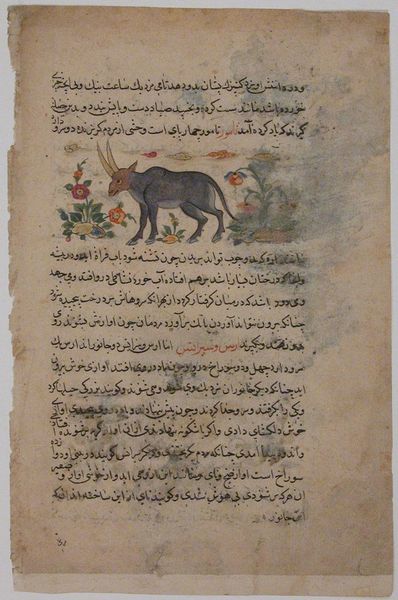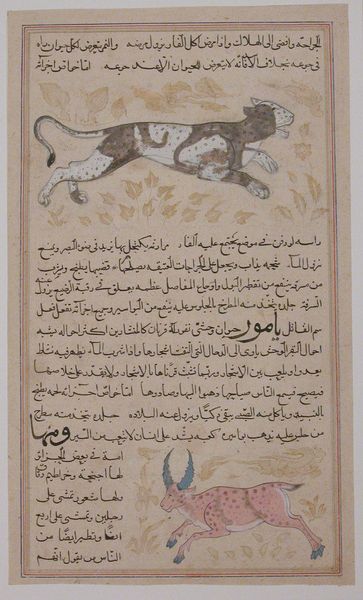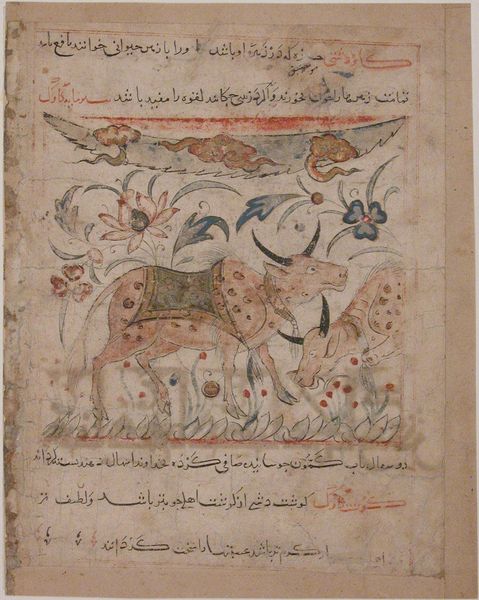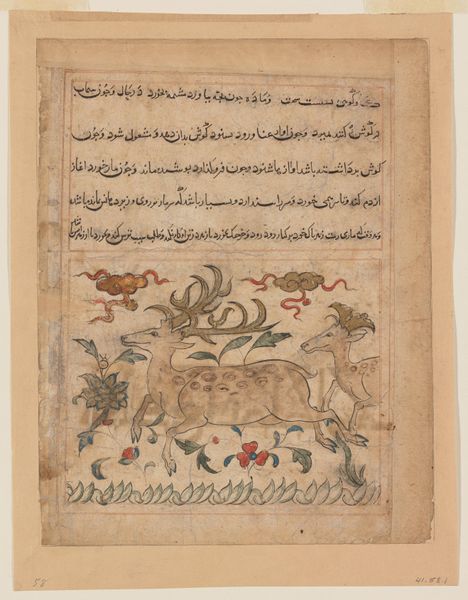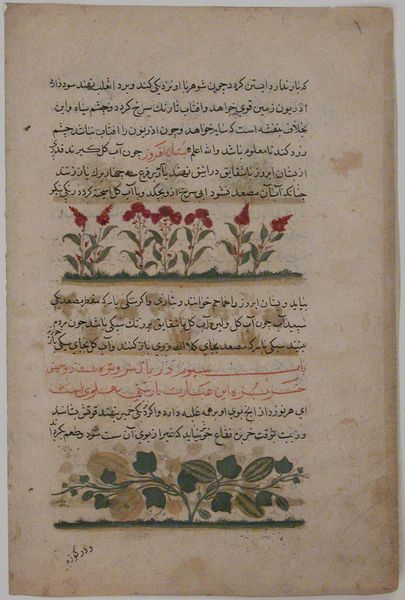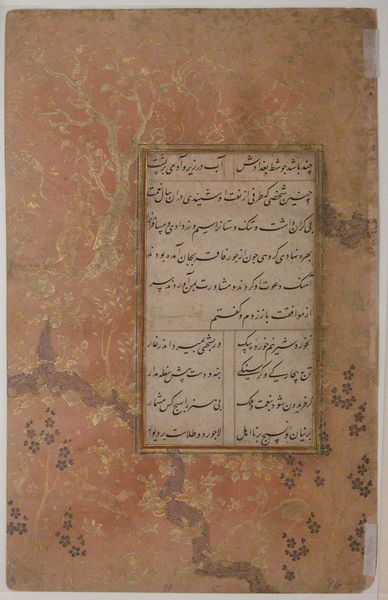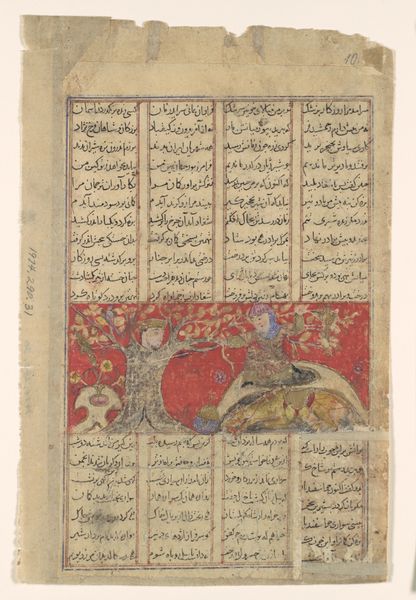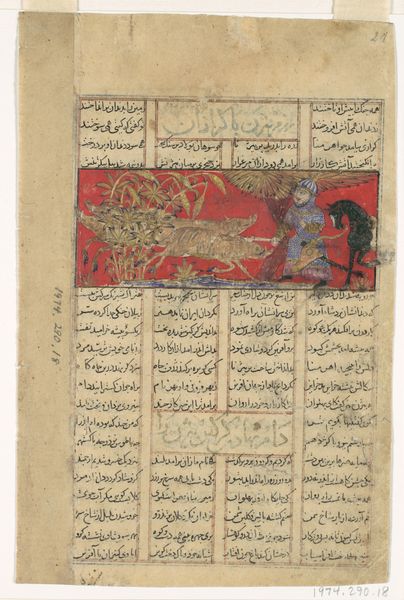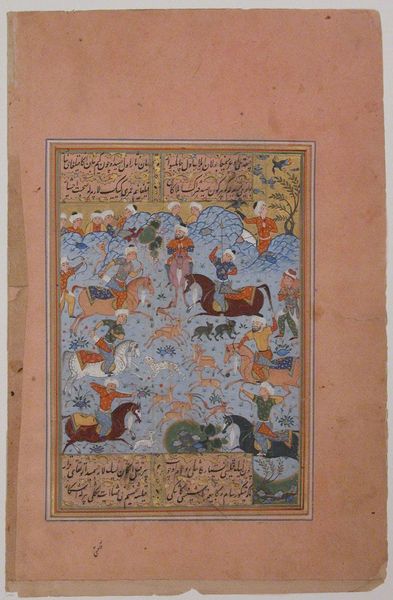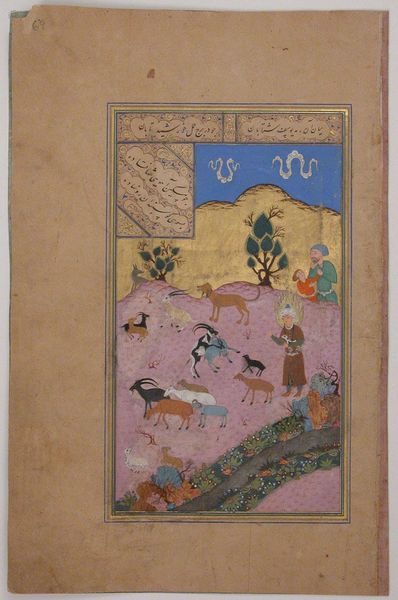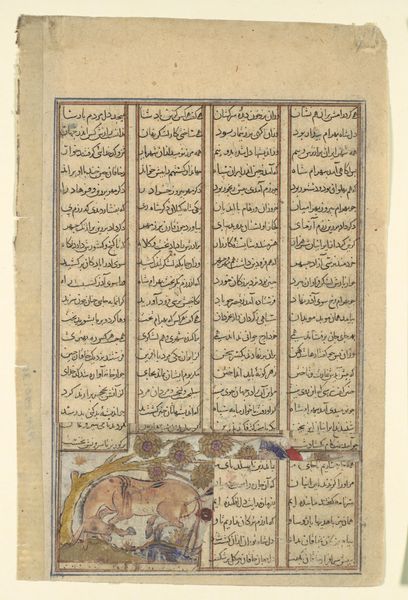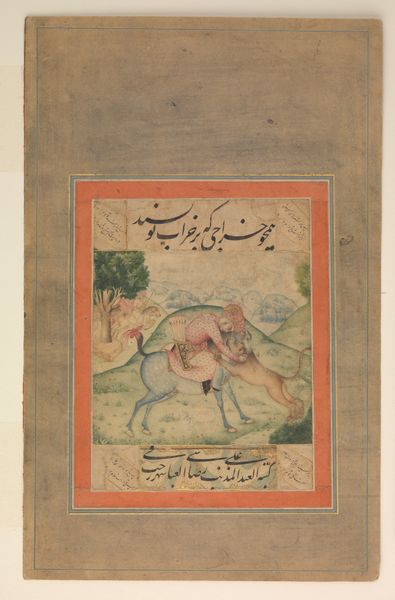
"A Bull", Folio from a Dispersed Nuzhatnama-i ‘Ala’i of Shahmardan ibn Abi’l Khayr 1400 - 1425
0:00
0:00
mixed-media, paper, watercolor, ink
#
mixed-media
#
narrative-art
#
ink painting
#
landscape
#
figuration
#
paper
#
watercolor
#
ink
#
coloured pencil
#
islamic-art
#
mixed media
#
miniature
#
watercolor
Dimensions: Painting with Text Block: H. 7 1/8 in. (18.1 cm) W. 4 1/4 in. (10.8 cm) Page: H. 9 3/4 in. (24.8 cm) W. 6 9/16 in. (16.7 cm) Mat:: H. 19 1/4 in. (48.9 cm) W. 14 1/4 in. (36.2 cm)
Copyright: Public Domain
In this page from a manuscript, painted in Persia sometime around the 11th or 12th century, a bull stands amidst stylized flowers. The bull, a symbol of virility and strength, strides confidently, its robust form filling the frame. The bull motif is not confined to this single page; it echoes through the ages. We see it in the Minoan frescoes of Knossos, where bull-leaping was both sport and sacred ritual. This symbol transcends geographical boundaries, surfacing in ancient Mesopotamia as a sacred animal associated with divinity. Over time, the bull has been reimagined and reinterpreted. Is it merely coincidence that the image of the bull recurs across civilizations? Or does it tap into a deeper, subconscious association with power, fertility, and primal energy? The enduring presence of the bull symbolizes our collective, inherited memories. Here, it appears less as a beast of burden and more as a totemic figure. Its emotional resonance is undeniable, continuing to engage viewers on a profound level.
Comments
No comments
Be the first to comment and join the conversation on the ultimate creative platform.
